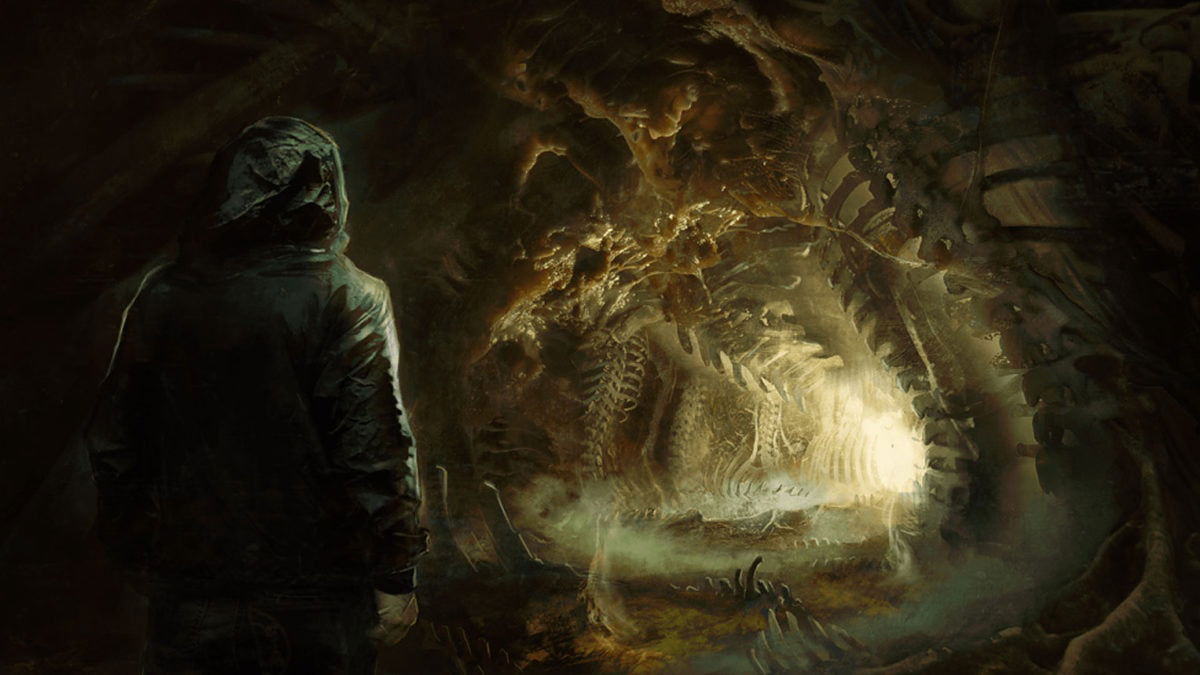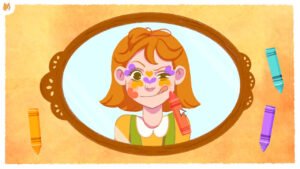Horror has had a bit of a resurgence lately with franchise finales like Halloween Ends and new titles like Smile. With an ever-increasing number of YouTube channels looking at horror titles, and the horror genre seeing an uptick in mainstream interest, it is a great time to enjoy scary games, especially this Halloween.
One of the studios that is enjoying the fruits of this new interest in the genre is Bloober Team. The Polish-based studio sprung onto the horror landscape with its hit title Layers of Fear, and has been in the limelight ever since. With their latest release, The Medium getting the TV series treatment and their current work on Silent Hill exciting fans worldwide, the excitement around the horror developer does not look to be slowing down anytime soon.
While the Blooper Team is devoted to developing and releasing its own titles, they also have a publishing arm that helps other horror titles reach millions of excited fans. Feardemic is a new publisher that focuses on horror and horror-style titles and CGMagazine had the chance to talk to President and CEO of the fledgling company, Scott Millard. Diving into all the aspects the new publisher can help, Millard gave a clear concept that Feardemic is here to stay, and has some big plans for the future of horror.

CGMagazine: Could you give an overview of what Feardemic does?
Scott Millard: Feardemic is the publisher of video games. We publish computer games predominantly on consoles, such as PS5, Xbox Series X, and Nintendo Switch. We specialize in one type of genre, which is horror games. We do this because, number one, we were founded by a gentleman called Peter Babieno, who’s also the founder of Bloober Team, whom you may know from games such as The Medium, The Observer, Blair Witch, and of course, Layers of Fear. Because we are currently in what I think is an apt description, the golden age of horror, horror has exploded in popularity over the last several years.
Interestingly enough, perhaps it’s in uncertain times’ people like to seek respite in horror experiences that they feel in control of. I think that could be an explanation for it, but we’re a direct result of this sort of golden age of horror. We’ve come out of the Bloober Team.
Bloober Team is a developer, and we’re a publisher, the differences being that they develop their own games, and they’re restricted to their own creative output. Whereas we scour the world and look for games from third parties that we can add value to, publishing skills, technical skills, and marketing skills, and bring them to market under our brand and as part of our portfolio.
CGMagazine: You mentioned you scour the globe to find games to work with, what does that process look like? How do you know a game is a good fit for Feardemic?
Scott Millard: Well, first of all, let’s define what horror is for us. Horror for Bloober Team, and for a lot of developers who do specialize in horror, tends to be a fairly narrow definition because it is very much built around their own creative output. For Feardemic, when we started this process—and I’ve been working on the project for a couple of years now—it was important for us to understand that horror had a much wider scope than just psychological horror.

There’s a spectrum. There’s intensity, low-intensity, and high-intensity horror. So when you start at low intensity, you’re almost talking about games for children. If you think about a platform called Roblox, the most popular game on that platform in 2021 was a game called Piggy. Unmistakably horror, it contained all the horror tropes that are chasing people around with cricket bats and baseball bats. It really was a horror game, but it was for kids.
You have other properties as well, like Monster High, The Addams Family, etc.; all of those things are low-intensity horror for children. Get to the other end of the spectrum, of course, and you have games like The Medium or games that we are publishing next year like Dark Fracture, a bit more traditional psychological horror. Lots of tension and lots of uncomfortable situations that the users put themselves into.
So in that respect, we have a very large scope of games that we can search out and find that we can put on a spectrum of products and build our pipeline around. If you look at the games market itself, the total addressable market is about 30% of the whole. So it’s about 30% of games that are being made today that would fit within our spectrum somewhere. That’s quite a big selection, so it’s not as niche as you may think.
It really is a broad part of the market. In fact, if you watched Summer Games Fest, you may have noticed that probably at least 60% of the games that they show would have fit on our spectrum at some point as a sort of narrative that is influenced by a horror-like idea.

CGMagazine: What are some things you add to a third party that make working with Feardemic so advantageous to both of you?
Scott Millard: Well, basically, the four main things that we do, or rather, we provide for our partners when it comes to uploading publishing services is number one, technical skills. So coming from a development background like Bloober Team, we have access to some of the best technical programmers and minds in gaming. So there’s not much that we can’t solve.
A lot of the developers that we’re working with are our first-time developers, and our younger teams, sometimes the team require some technical expertise. That technical expertise is in the form of programming, 3D modelling, or some value that we can add, something that we can bring to the table that will help them in that aspect. So that’s technical production.
Secondly is porting, taking their game, which is usually created for PC, and taking it to other platforms, such as PlayStation, Xbox, or Nintendo Switch. Thirdly is, of course, marketing services, which you know are extremely important to games and to game developers. I think there are 27 new games being launched on Steam every day, so getting them in front of people is very important. Finally, number four, publishing services, you kind of think, “what does that mean?” think about it as managing the IP, or the game over its entire lifecycle.
Back when I got into gaming—and I’ve been in gaming a long time—it used to be all about the day-one numbers. You would literally focus all your energy on shipping a million units, then moving on to the next one, then just letting it go. Times have changed. The publisher is now a retail-facing facility. We deal directly with consumers through Steam, PlayStation, and Xbox Series X platforms, so we’ve, in a sense, gone from wholesalers to retailers. So we’re constantly managing the products through sales and through promotions. If you do that correctly over the life of the title, your fourth year should be as good as your first year.
We’re finding now that games have much longer tails on them, and people are no longer moving on to the next. They’re waiting for it to get to a price point where they think that they’re prepared to pay for it. So managing that game over a longer term is super essential for the developer, so they can move on to their next project, and we can focus on what they made last year.
CGMagazine: For new publishers that might produce a game for you, what are they giving away? Could they go to another publisher with the sequel? How does that publishing arrangement work, how do you ensure that if an IP does take off, everyone gets a piece of that pie?
Scott Millard: Every publisher is different, but at Feardemic, we do not take the IP. The IP will always remain with the developer. How we do it is we present a share of the revenue or revenue share options. So essentially, they license it to us to publish it on their behalf, and part of that is we share revenue with them. That can be anything from 50% to another percentage, dependent on how much we are actually contributing to the end results.
So it varies, but generally, it’s about 50%. In fact, if you wanted to have a look, there was a publishing agreement that’s floating around online that was put out there by Raw Fury because they wanted to show everyone what their publishing agreement looks like. Ours is not that dissimilar to that, and it’s pretty standard.
Developers keep the IP, and we basically take a revenue share. When it comes to new publishers and new IPs, if something becomes incredibly successful, yeah. If it’s successful because of Feardemic’s publisher, for example, of course, we wouldn’t want a priority option on a sequel because, in our contract, we do have a priority option on a sequel. But if the developer gets a better offer, and we aren’t prepared to match that offer, then they can move to another publisher.

CGMagazine: You mentioned technical help. What sort of things does Feardemic add? How would you be able to help newer emerging designers?
Scott Millard: By the time most games get to us, they’re usually pretty fully formed. The people that have created them have a certain level of technical skills. I suppose where we see help is needed is dependent on the platform or the actual technology that the developer uses to create their game. If it’s in Unity, usually, those developers tend to have a fairly good handle on it. Unity seems to be a small team-friendly basis to create a game.
Whereas you have Unreal Engine, which is incredibly powerful and incredibly versatile, but usually the expertise required for Unreal games, in its entirety, is greater than that of Unity. So with Unreal games that come to us, the developers usually say, “Oh look, we need some more programming help, we need some more 3D modelling help, and then a few optimization help.”
We know where to find those programmers that we can bring in and put on that project. So that’s kind of the technical skill set, some last mile technical skills as well, such as the localization, the implementation of those localizations, QA, and some other technical things that make the whole process a little easier, but it varies from project to project.

CGMagazine: Anything else you’d like to add for people that might be interested in Feardemic, or the products you put into the market?
Scott Millard: The idea of Feardemic being a single vertical publisher is based on the idea that content needs curation. There’s so much out there that people can find horror on all platforms, all streaming services, and all types of things. What we would like to do is try and put a considerable amount of it together over the next decade to become one of the largest single vertical publishers of horror narrative content in the world, so that people can find that type of content easier within our wrapper of horror.
If you want to find a comparable, you can think about Paradox as being a company that sort of produces or publishes strategy games. We focus on horror, and they focus on strategy games. I suppose that’s a good comparison. We don’t want to be everything to everyone, and we really want to be able to be an expert in the field that we choose and therefore make it easy for consumers to find what it is they want.




